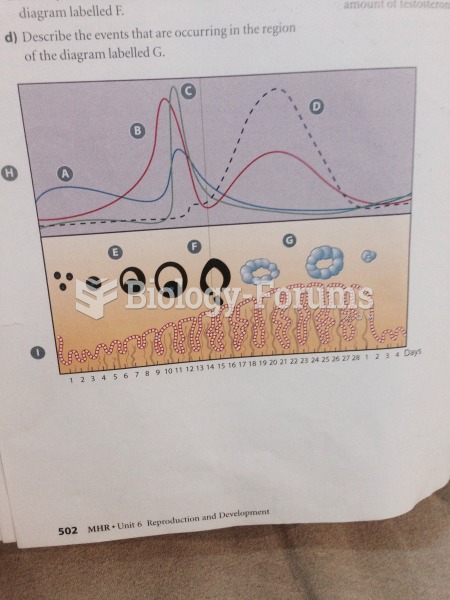Answer to Question 1
2
Rationale:
1. Ovarian cysts do not occur with each menstrual cycle in normal women. The client is experiencing the mittelschmerz, or mid-cycle pain, of ovulation.
2. The client is experiencing the mittelschmerz, or mid-cycle pain, of ovulation. This is a very common experience.
3. Fallopian tubes do not go into spasms. The client is experiencing the mittelschmerz, or mid-cycle pain, of ovulation.
4. Although the uterus does move up and down through the menstrual cycle, at mid-cycle, the client is most fertile, and will be at the lowest position of the pelvis, to facilitate conception. The client is experiencing the mittelschmerz, or mid-cycle pain, of ovulation.
Answer to Question 2
2, 3, 4
Rationale:
1. Getting a massage from a licensed massage therapist for back pain, prescribed by the primary caregiver, is a perfectly good use of complementary therapies.
2. Trying out a homeopathic medicine from a friend to reduce swelling in your legs is a risk factor when considering these therapies. Lack of standardization, lack of regulation and research to substantiate their safety and effectiveness, and inadequate training and certification of some healers make some therapies risky.
3. Getting a chiropractic treatment for low back pain due to discomforts of pregnancy without telling the primary health care provider is a risk factor when considering these therapies. Lack of standardization, lack of regulation and research to substantiate their safety and effectiveness, and inadequate training and certification of some healers make some therapies risky.
4. Taking an herbal preparation suggested by a health food store worker for treatment of leg pain is a risk factor when considering these therapies. Lack of standardization, lack of regulation and research to substantiate their safety and effectiveness, and inadequate training and certification of some healers make some therapies risky.
5. Joining a group that practices tai chi weekly to help with physical fitness and movement is a perfectly good use of complementary therapies.
Nursing Process: Assessment
Category of Client Need: Safe, Effective Care Environment: Management of Care







